Solid state radomes compared, part 3 – Furuno checks in
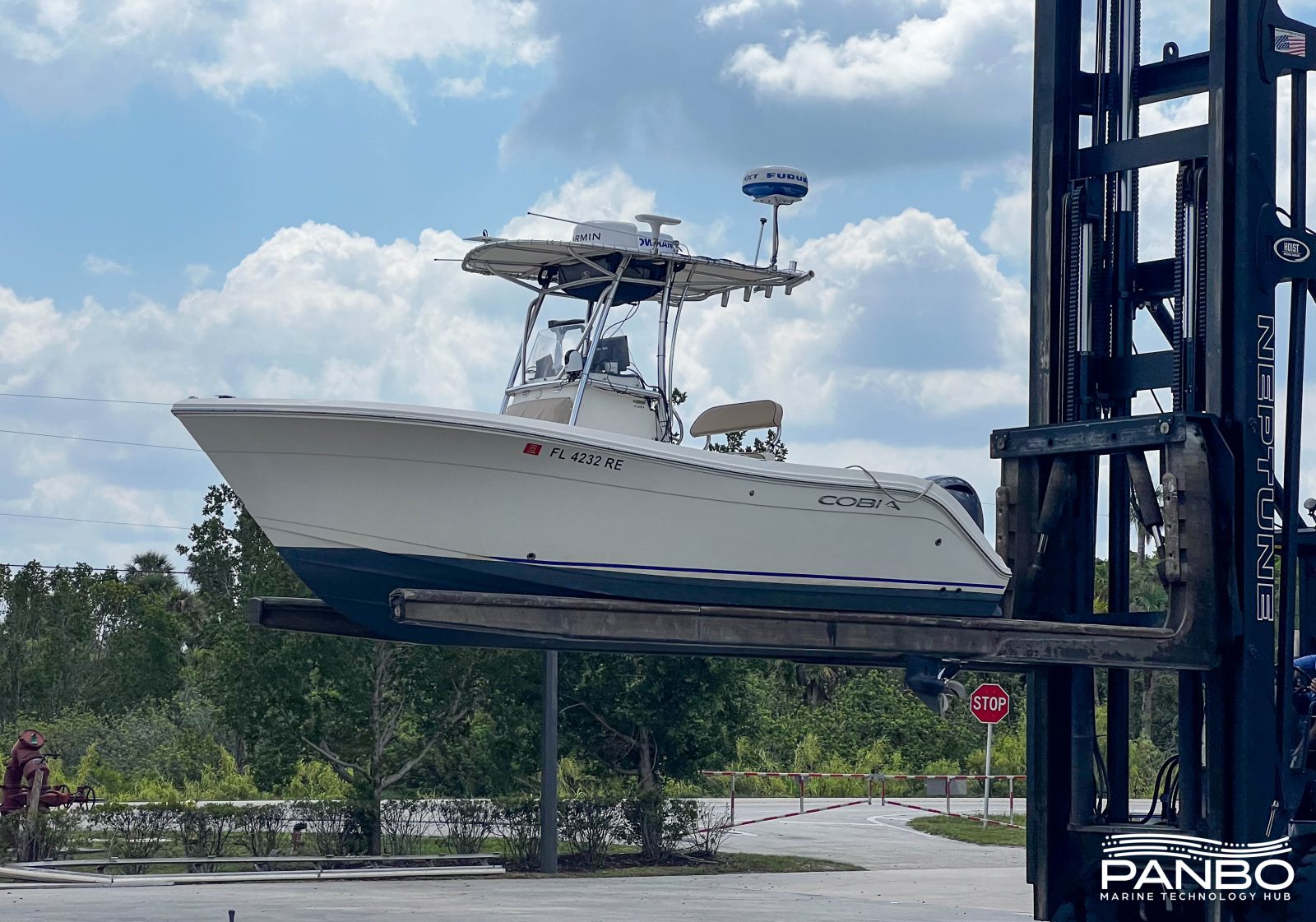
This article is supposed to be a thorough comparison of how Furuno’s DRS2DNXT compared to the other radars I’ve tested. Unfortunately, testing multiple radars on a 22-foot boat is challenging. The most recent challenge included snapping a freshly made mount before I was able to get offshore with the setup. The bad news is, I wasn’t able to complete all my testing scenarios. The good news is, I still have the radar unit and I’m working on more permanent and robust mounting options. But for now, here’s what I’ve learned.
| Size | Weight | Output power | Beam Width | Max RPM | MSRP | |
| Furuno DRS2DNXT | 19-inches | 14.3 lbs | 25 watts | 5.2 degrees | 48 | $2,295 |
| Garmin Fantom 18x | 18-inches | 14 lbs | 50 watts | 5.2 degrees | 60 | $2,199 |
| Raymarine Quantum 2 | 18-inches | 12.4 lbs | 20 watts | 4.9 degrees | 24 | $2,310 |
| Simrad Halo 20+ | 20-inches | 13 lbs | 25 watts | 4.9 degrees | 60 | $2,299 |
This is the third installment of this series. The first two installments can be found here and here. I plan to continue comparing the features, interfaces, and capabilities of Furuno’s DRS2DNXT, Garmin’s Fantom 18x, Raymarine’s Quantum 2, and Simrad’s Halo 20+ radomes. Interestingly, I observed very little correlation between “better” specs and better performance. Radar performance has long been a mix of science and art and I don’t see anything contradicting that in these results.
Tales of mounting woe

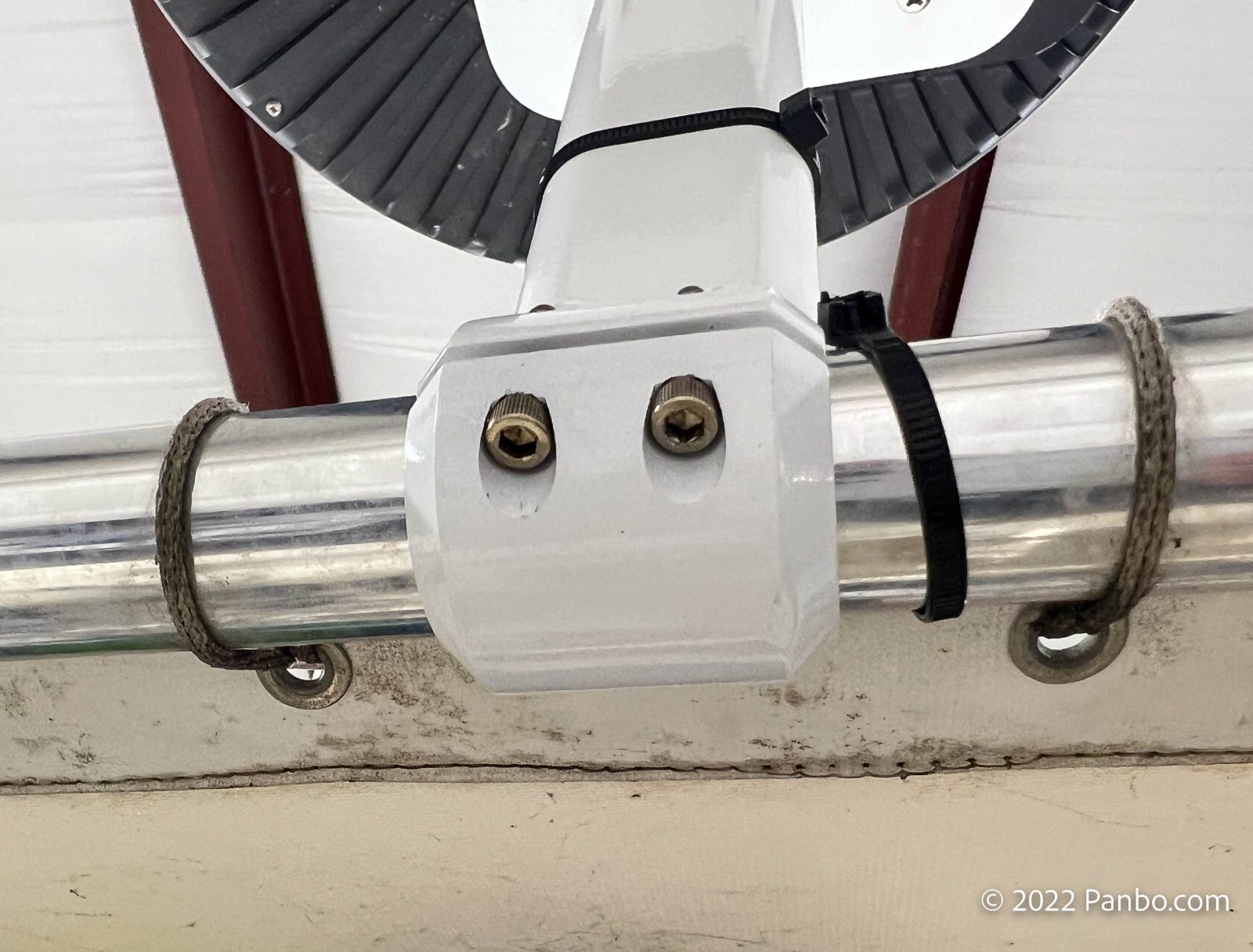
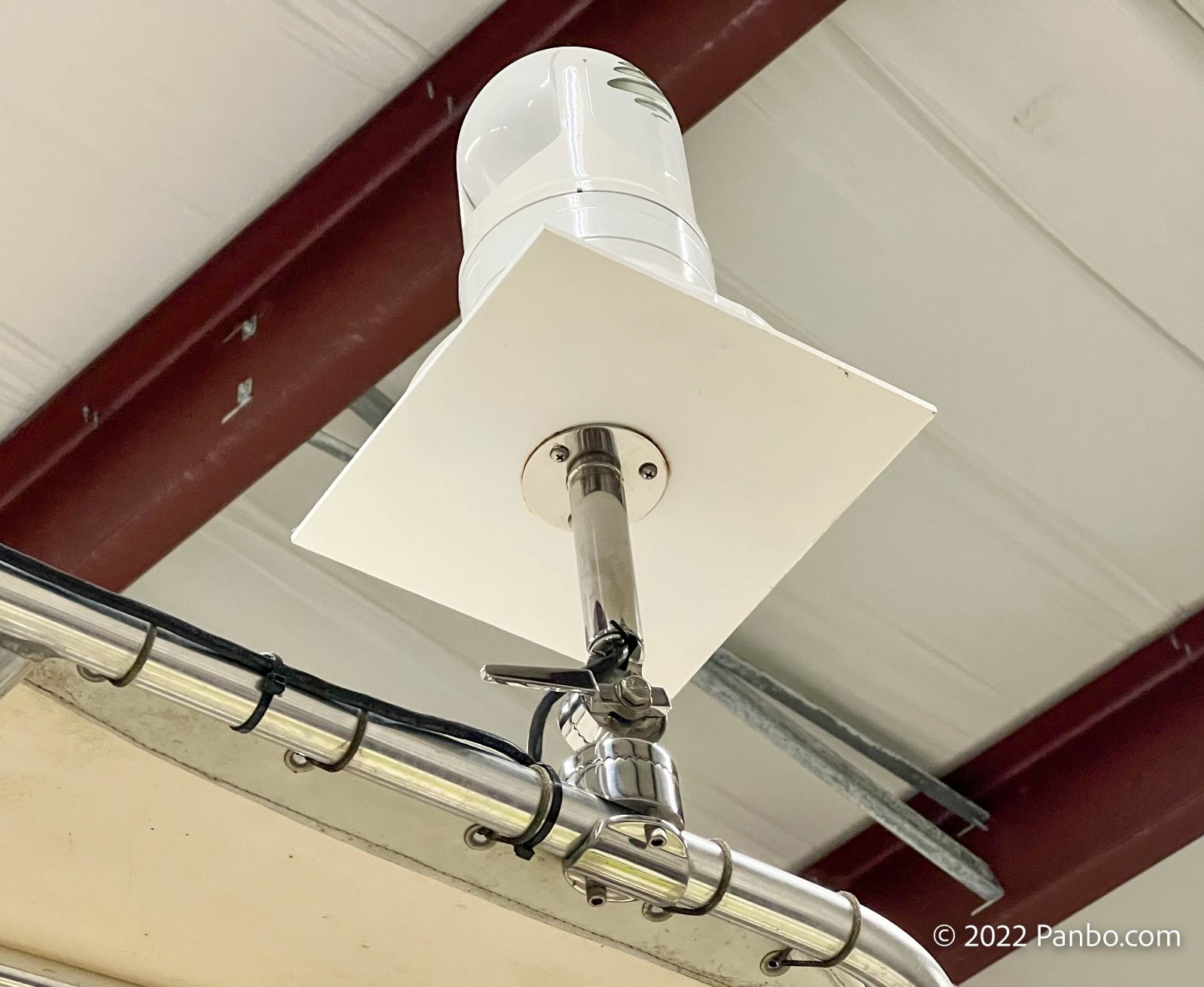
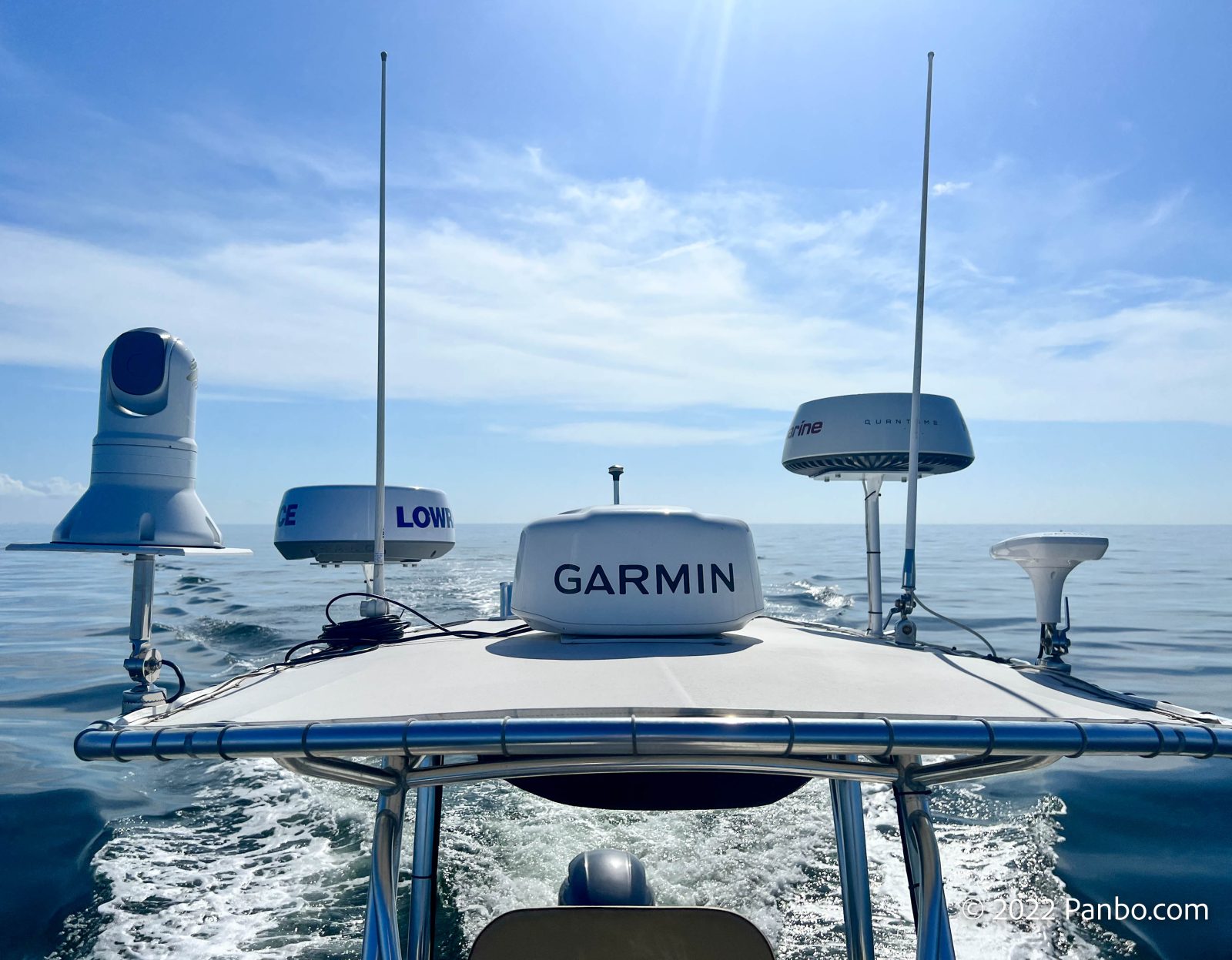
Indulge me while I give a quick rundown of the trials and tribulations of the mounts I’ve used. Nautical Creations made me a pair of brackets that worked well for a while. But, I think the combination of a relatively small, single clamp and rough water meant that both brackets started slipping. I tried to make that better by tightening the screws, however, all I accomplished was distorting the relatively soft aluminum of the clamps.
So, I needed a plan b and possibly c. It seems clear the only lasting solution is an option that clamps in multiple places and relieves a single mount of all the load. I’m working with Nautical Creations on a low-profile arch with multiple modular mounting locations for cameras, radar units, or whatever other random items I might test. But, in the meantime, I wanted a way to test the Furuno radar before the arch is ready. I’ve used Shakespeare 1″-14 rail mounts with various platforms effectively. In exchanging photos with the fabricator, he saw one of Shakespeare’s mounts and suggested we build a mount with one of them. That arrived recently and so I quickly bolted it onto the rail of the t-top and hit the water.
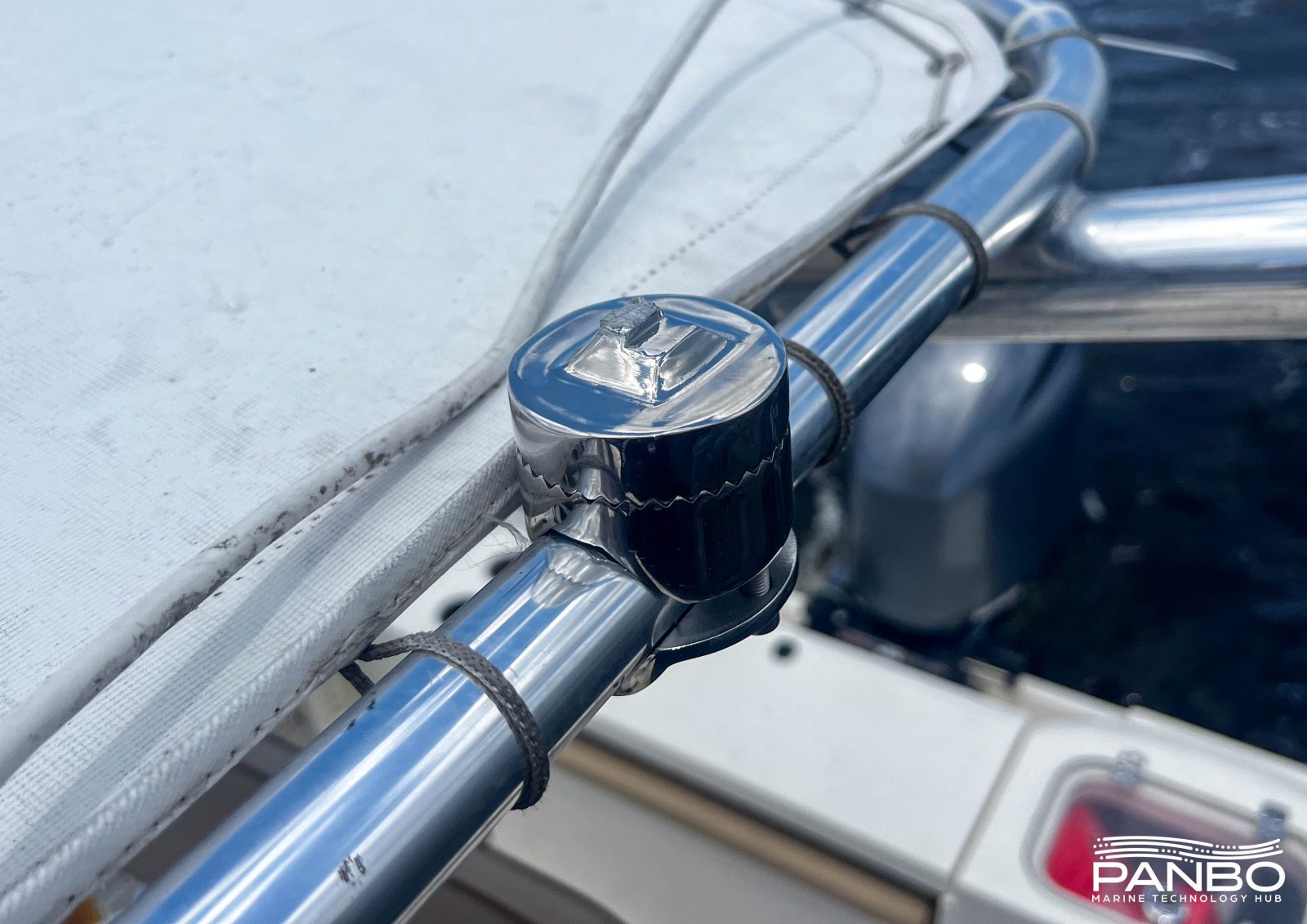
As you can see, I found a weak spot in this mount as well. It’s quite obvious I was asking the mount to do a job way outside its intended purpose. That job simply put too much stress on that relatively small casting where the 1″-14 mount meets the clamp body. So, my testing was aborted and now it appears to be time to concentrate on the arch. In the meantime, let’s take a look at the testing I’ve been able to complete.
Testing results
I came into these tests expecting a lot from Furuno’s radome. Furuno has, in my opinion, a well-deserved reputation for making high-performance radars. Looking at a Furuno radar scope, I feel there’s often something about what you see that just looks better. Let’s see if the DRS2DNXT lives up to that reputation.
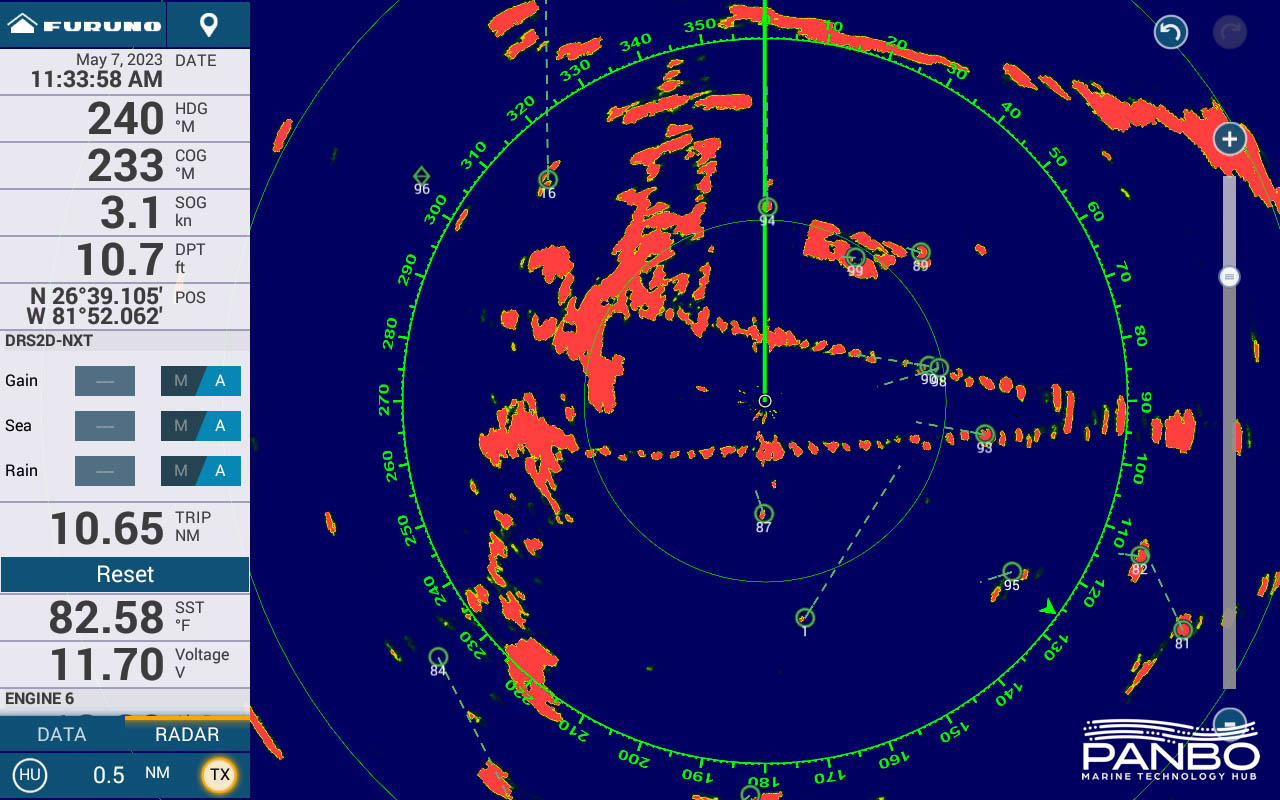

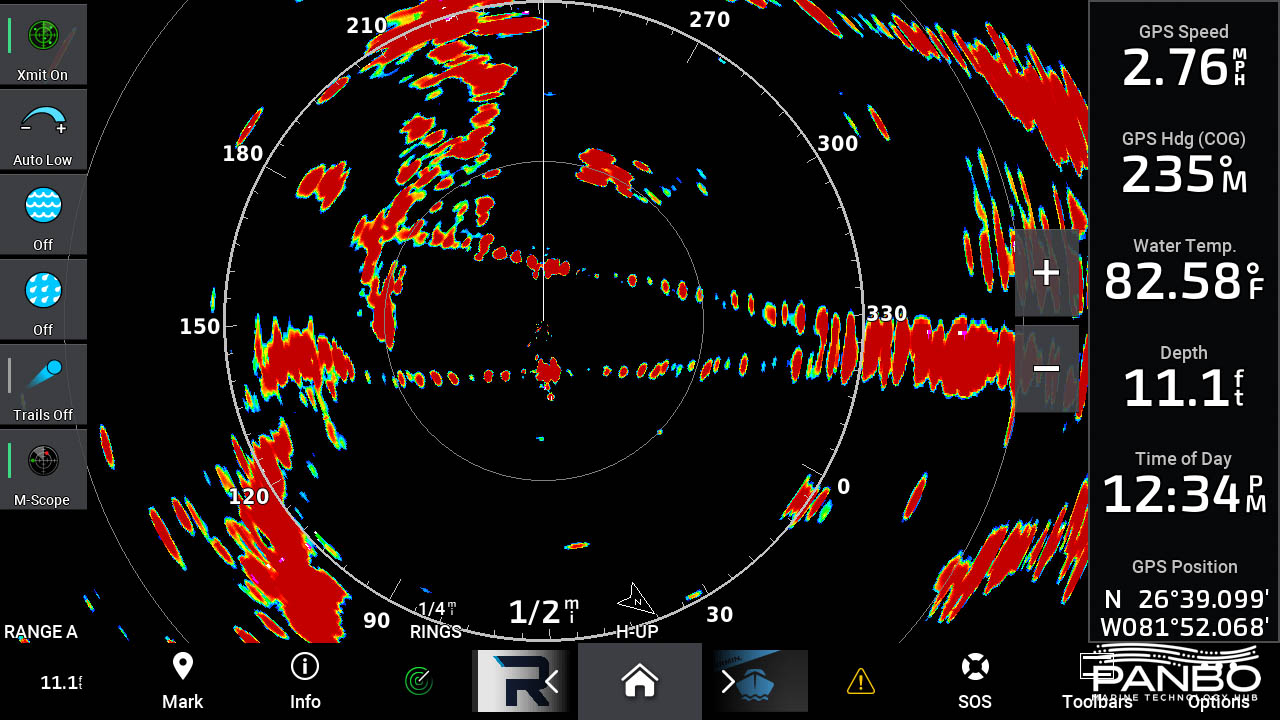

As I mentioned, I can really only fit three radars on the boat so I had to pick one unit to leave off this time around. I picked the Raymarine Quantum 2 to leave off. The Quantum is the oldest radar of the four and I think it’s reasonable to expect we may see a new unit relatively soon.
Previously, in this same area, I’d felt that the Simrad was the best-performing unit. This time around, the Furuno and Simrad radars are performing at similar and very high levels.

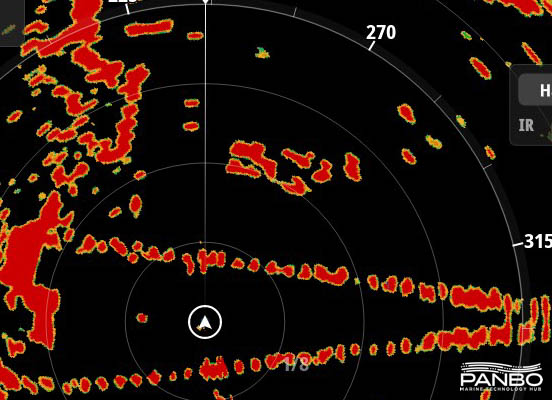
Both radars do an excellent job representing the returns around them. There’s very little distortion and the returns seem consistent and clear. If I work hard to find a difference between the two, I can find one in the way that Lofton’s island is depicted just past the bridge forward and to starboard of the boat. I think the Furuno radar is drawing it slightly more accurately. The island’s current configuration doesn’t quite match what you see in Google Earth as that aerial picture was taken pre-Hurricane Ian and most of the docks are now gone.
3nm zoom scale
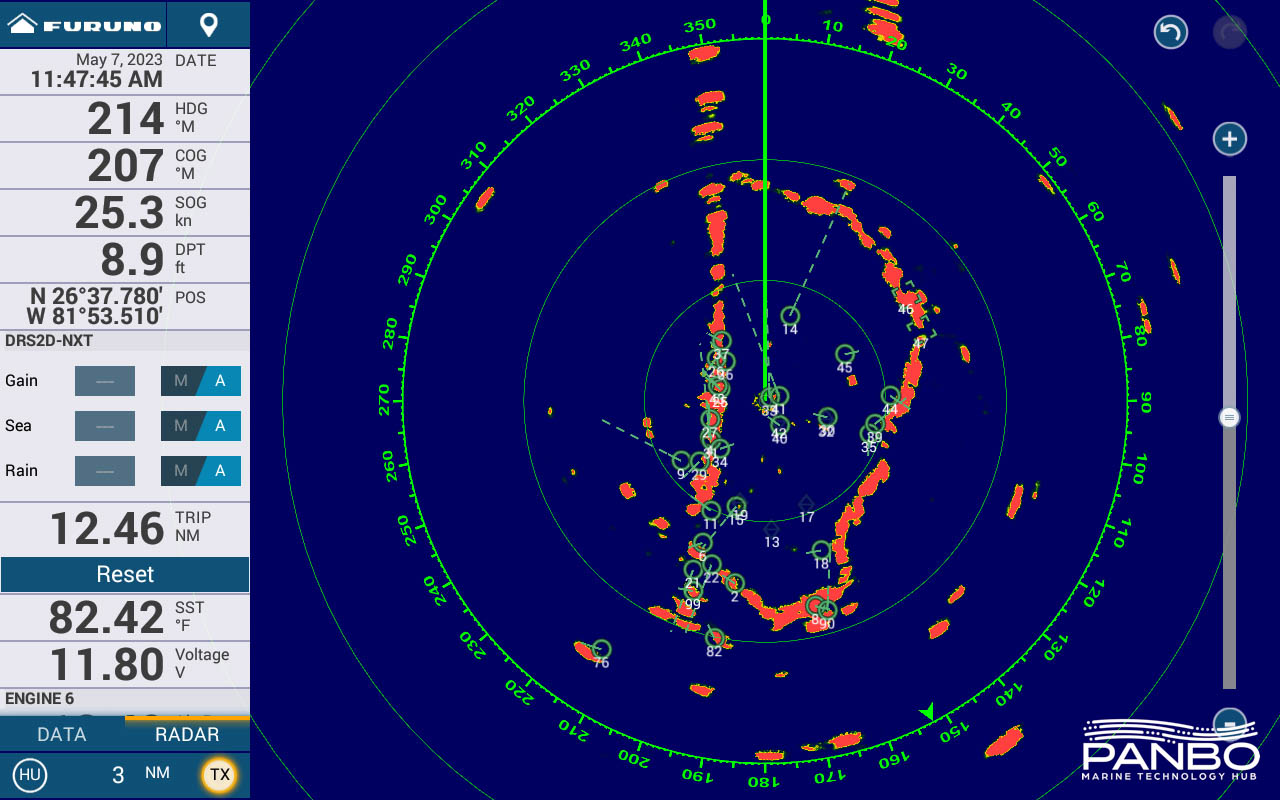


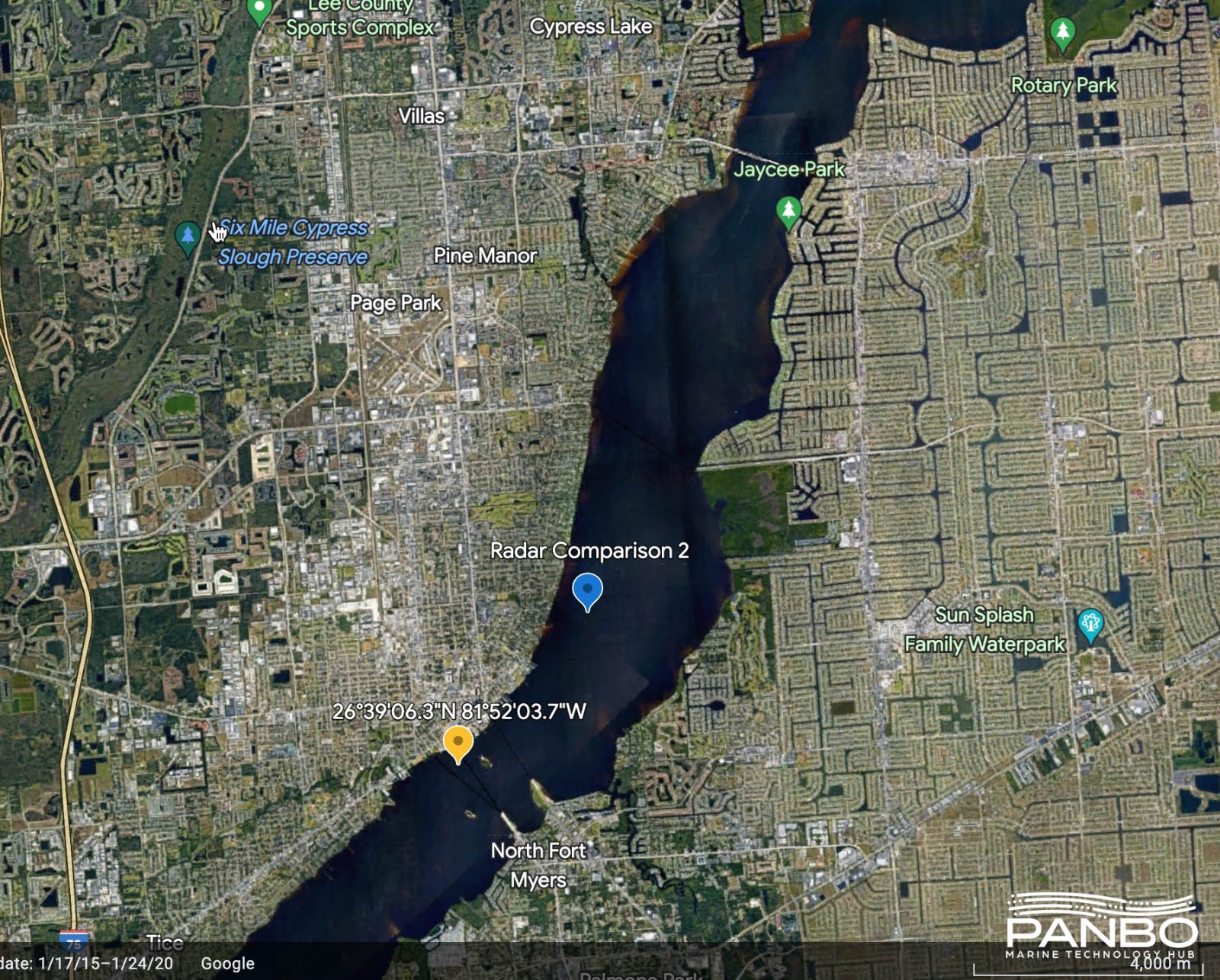
At the 3-mile range and in a more open portion of the river we have another opportunity to compare the performance of the radars. To my eye, Furuno is the least aggressive with gain and target expansion, Simrad is in the middle, and Garmin is the most aggressive. I think it’s a Goldilocks situation with Simrad striking the best balance. The difference between the Simrad image and Furuno’s is pretty small.
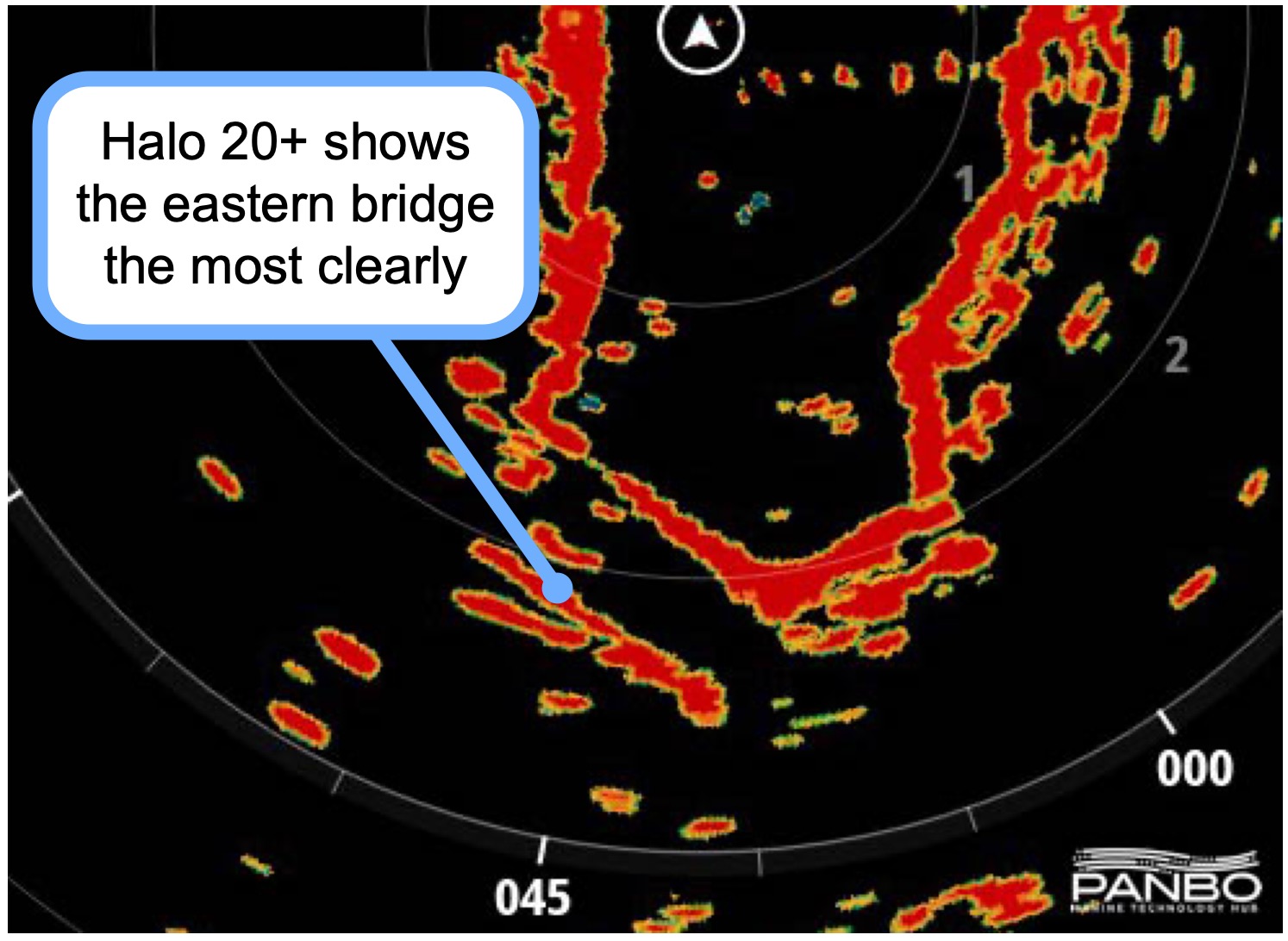
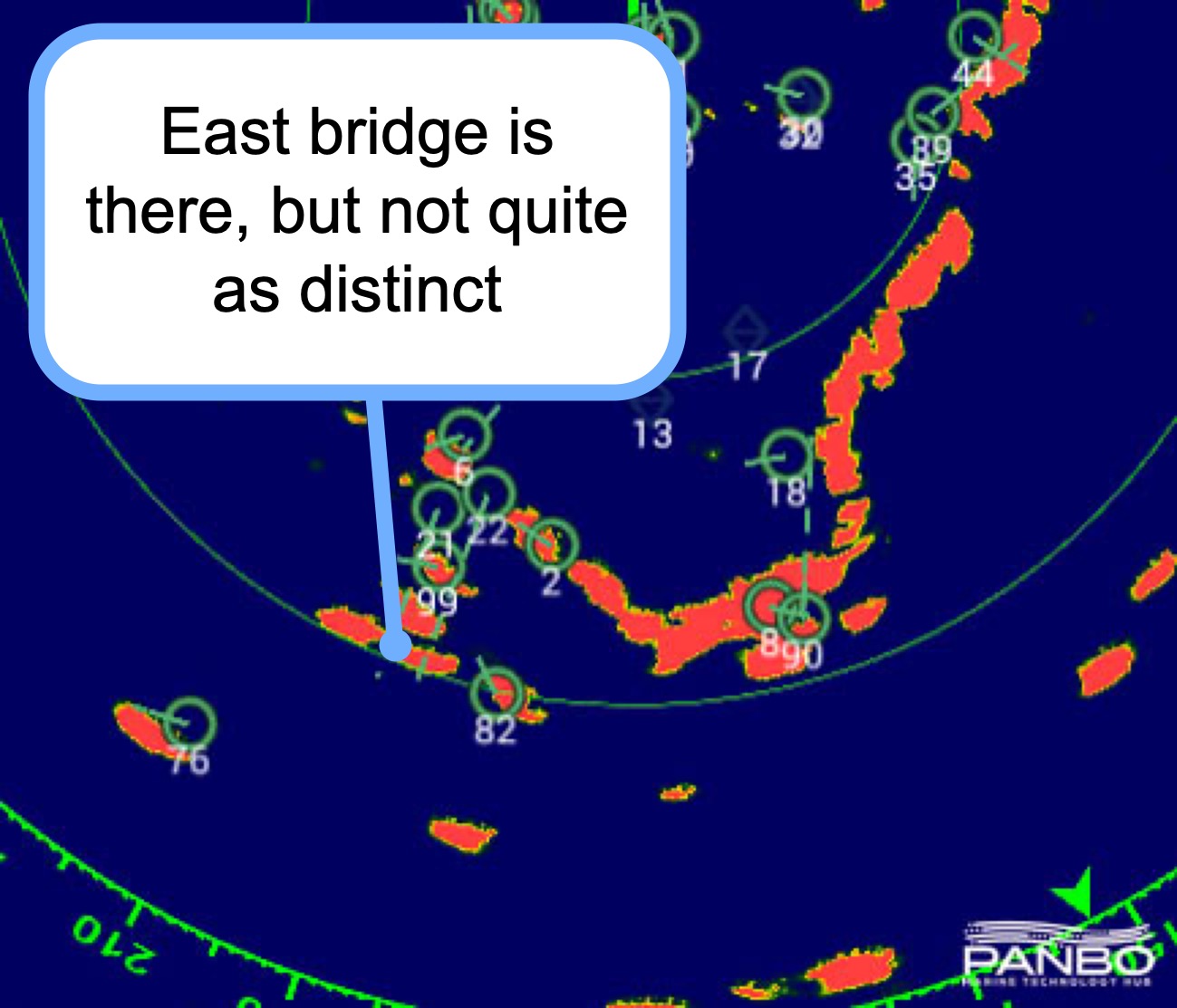
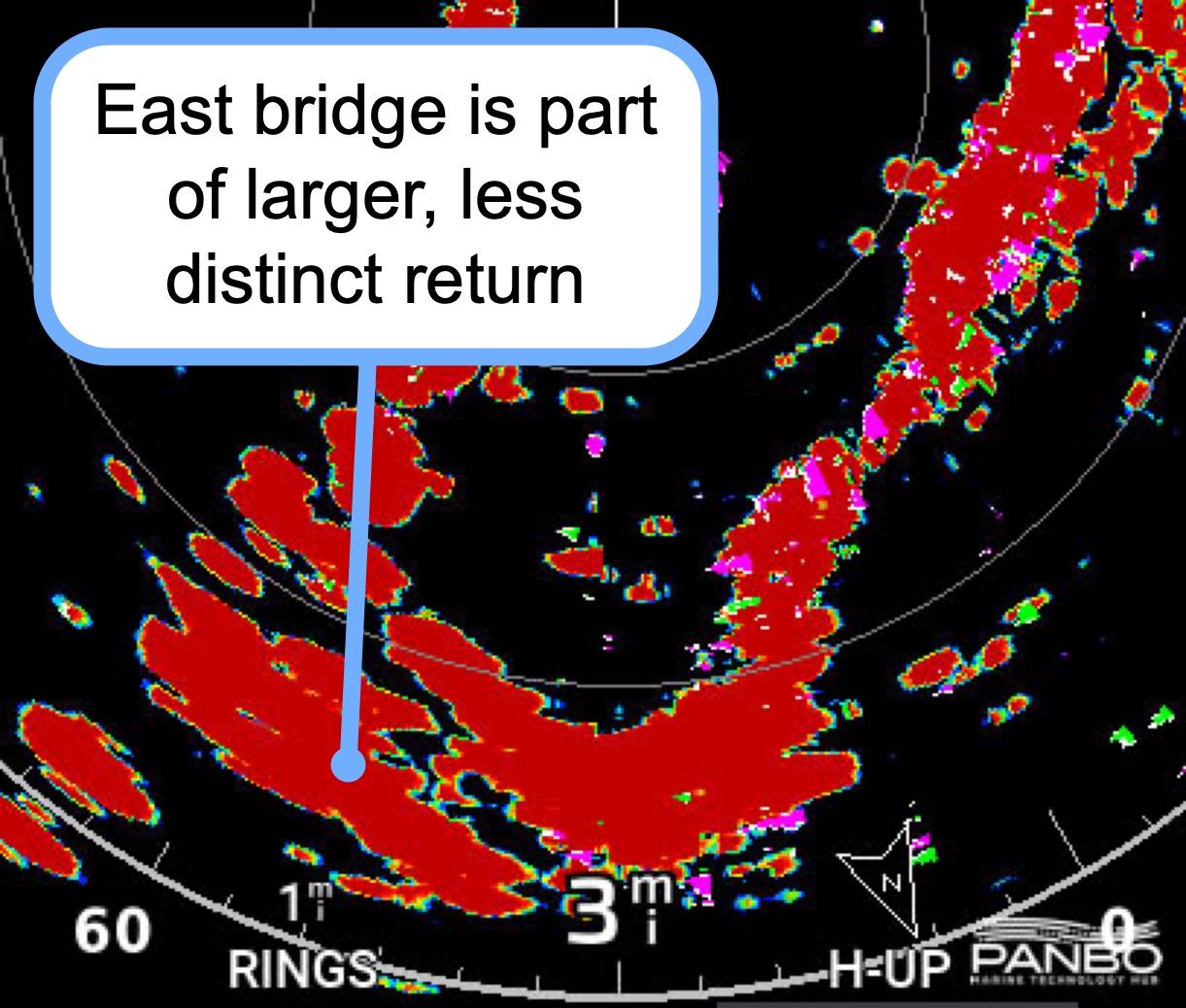
But, I do see differences like the Halo 20+’s clear returns of the second bridge aft of the boat. Even with gain at auto low, the Fantom 18x exaggerates the returns. In contrast, the Furuno doesn’t fully show the second bridge. With each of these tests, I wonder if the radomes’ positioning could influence the results. In this case, the results don’t seem to correlate to relative position. The Garmin is mounted on the center, forward, and the lowest. The Simrad is on the aft starboard side and elevated 8 inches. The Furuno is aft on the port side and elevated 16 inches.
True ARPA

All the radars in this comparison can utilize Doppler technology to highlight returns moving towards and away from the vessel in appropriate colors. The Halo 20+ can automatically acquire targets in two designated areas of the radar scope. But, the Furuno is the only radome that boasts what I would call true ARPA. As soon as the radar is powered on, it starts acquiring targets.
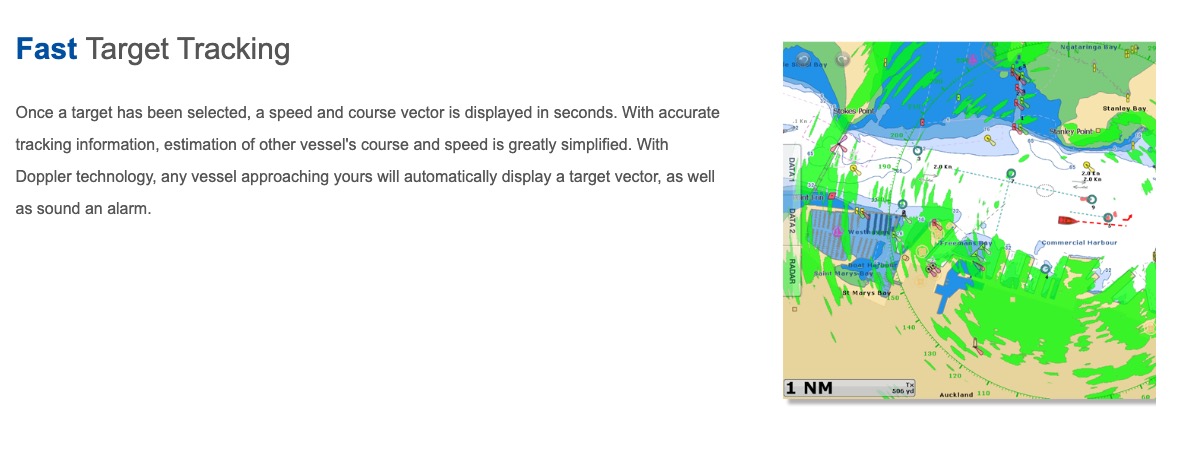
It’s interesting to note that although I call it true ARPA, Furuno’s product descriptions refer to it as Fast Target Tracking. Overall, I’ve noticed all manufacturers seem to be cautious about what they describe as ARPA. In the IMO world of commercial navigation equipment, ARPA has specific meanings and requirements, so their caution is probably well placed. However, the DRS2DNXT delivers everything I think of when the term ARPA is used.

In my testing, limited to the river owing to my bracket difficulties, I sometimes saw the unit over-identify targets. I suspect the sheer number of returns, many moving, serves to confuse the radar. Especially since many of the returns may be cars either close to the water on shore, or on bridges crossing the water.
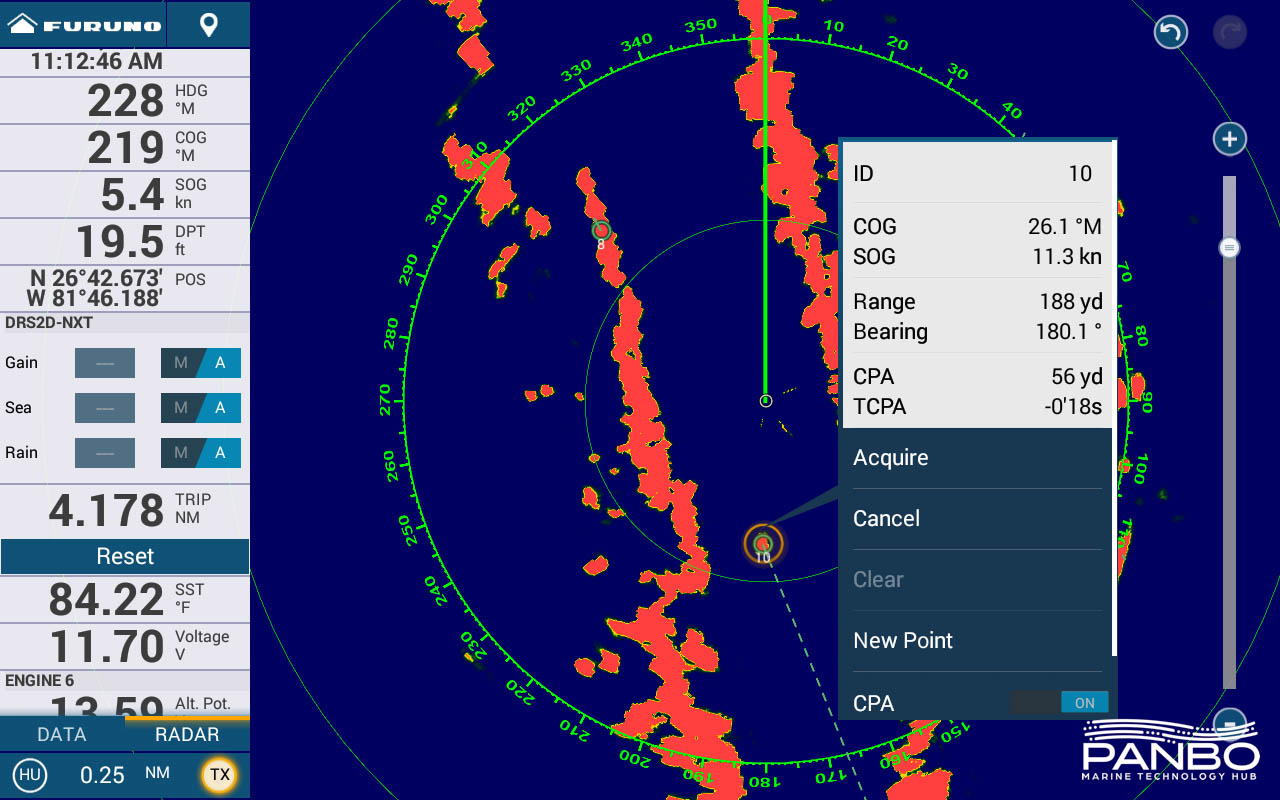
I should reiterate that my testing of target acquisition is hampered by only having the opportunity to test on the river. But, I’m still liking what I’ve seen thus far. In earlier entries in this series, I’ve noted suspect data from MARPA target tracking. Overall, what I saw from the Furuno was very good. Occasionally, when the scope got crowded and there were lots of moving targets, I did see inaccurate behavior. But, most of the time I saw very good results and highly accurate information as confirmed visually and with AIS.
Final thoughts
This comparison is less complete than I’d like. Until I am able to get the boat off the river and into open water, the comparisons won’t be complete. Once that’s done, there’s much to compare in how the radars and displays implement various features. That notwithstanding, Furuno’s performance thus far has been impressive and certainly lives up to its reputation for class-leading radar performance. So, as with previous entries, the series isn’t done and I’ll be back with more.



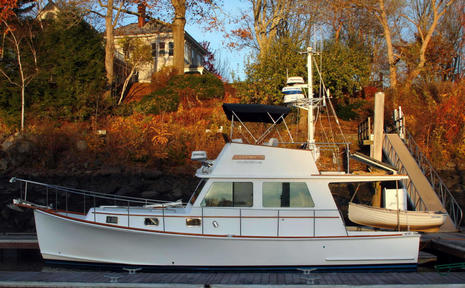
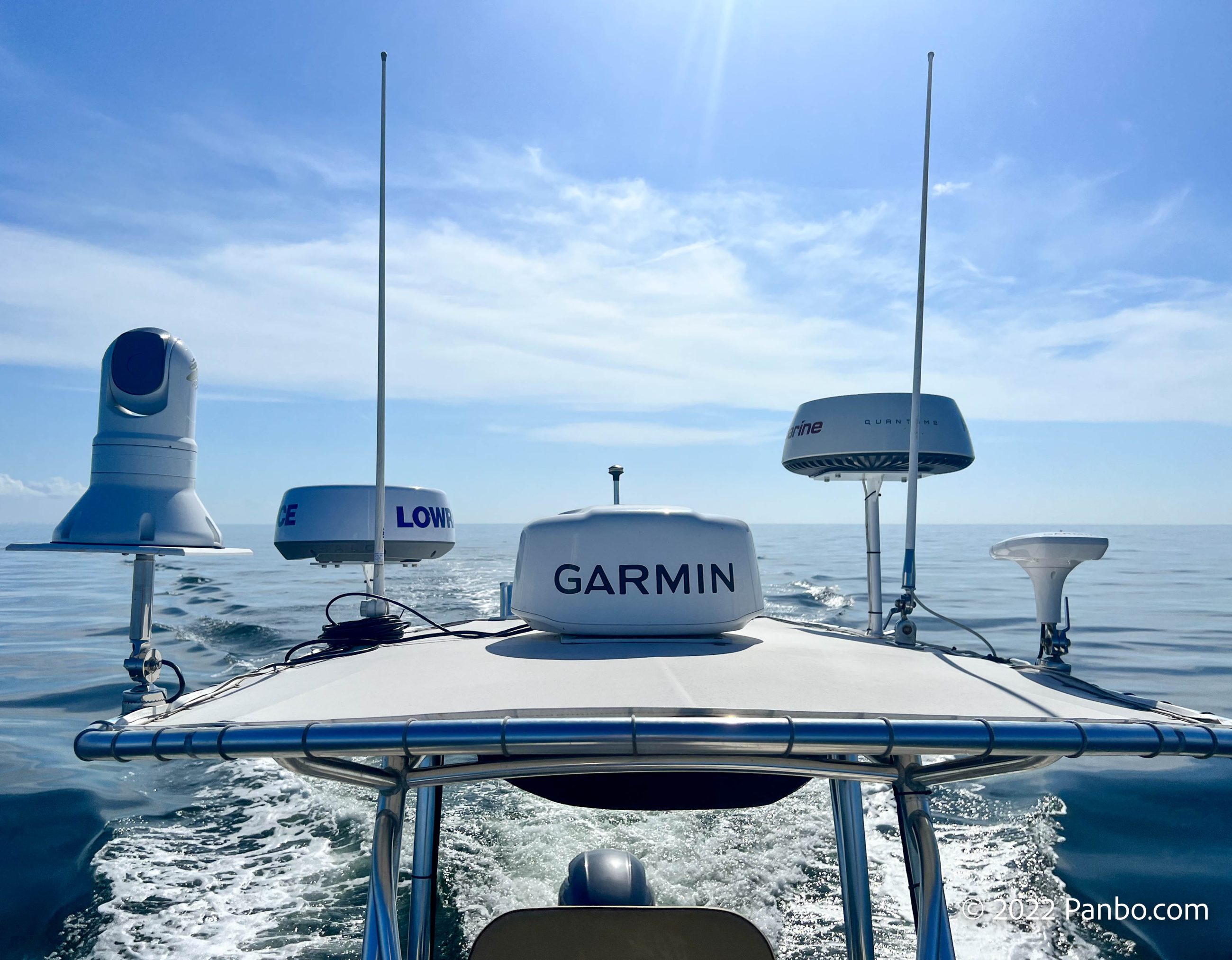








HI Ben – Nice article , however you have one slight setup issue on the Furuno. When it is not raining, the rain clutter should be set to zero ( rather then auto – turn to auto with precipitation is around) – otherwise some small targets can get filtered – particularly in areas of high clutter like you are testing . This is probably closer to the Simrads specific Harbor setting. Also it looks like sea clutter is turned off on the Garmin unit? You are correct that the height can make a difference, I would also be interested if the Garmin firing back in to the front to of the Simrad and Furuno is causing them to have turn up the interference rejection. Look forward to seeing more shots.
Nick,
The next time I’m out I’ll try the tests with rain clutter set to off. It’s hard to decide at what settings should be tweaked and what shouldn’t. I took a look at the TZT3 manual and it doesn’t suggest rain clutter be set to 0 when not in such conditions.
-Ben S.
Ben — This is sound advice based on my experience with the DRS25A-NXT. In fact, I very seldom use the rain filter except in a torrential downpour. On the ARPA/”Fast Target Tracking” issue, I have the same experience when close to shore with vehicles moving about, They will get tracked and create some amount of clutter on the display. However, the tracking of targets on the water is truly outstanding, both in terms of the speed at which they are acquired and the accuracy of the speed an course data. When I compare the ARPA sped and course for a moving vessel with a Class A AIS transponder that updates very frequently, the ARPA and AIS data match very closely. My experience with Garmin MARPA was very different (in a bad way) as to both acquiring targets and accuracy of the vectors. I don’t have experience with newer Simrad or Raymarine radars to compare.
Good to hear the confirmation on rain filtering, I’ll do some testing with it off as well. I do expect that the target acquisition challenges I captured will fade as I get into more open water. But, even in my more confined water testing, I’d happily accept the visual clutter in exchange for the information it presents.
-Ben S.
Although I am in New Jersey, I’d be happy to weld that broken stainless bracket for you.
I no longer have other radomes for comparison, but I’ve yet to see evidence that any competitor has equaled Furuno’s amazing Fast Target Tracking (ARPA) performance. As I wrote back in 2016, “NXT ARPA just works, rarely makes mistakes, and I find myself using it all the time”:
https://panbo.com/testing-furuno-drs4d-nxt-solid-state-doppler-radome-radar-redefined-most-definitely/
Eventually I bought that test DRS4D (and TZT2) from Furuno and I still use it almost all the time that Gizmo is underway. Mostly that means along the coast of Maine, where moving on-shore targets like Ben Stein is seeing around flattish Ft Meyers are rare. But I didn’t find such targets bothersome when I took the boat to the Carolinas either.
The oddball targets I do sometimes see are nearby birds or Gizmo’s wake in flat water conditions, but I like to think of them as reminders that NXT is constantly looking out for moving objects possibly headed my way.
Ben- I have been working on Marine Radar Detection Horizon calculations for a while now. I ran a model that adjusted the height of the radar by 1ft (0.33 meter) and observed a surprising amount of fading difference between 3.6 meters and 4 meter antenna heights, assuming a fixed target height of 10meters (thinking of bridges and tall trees on the islands etc). I’m not sure if you have seen plots of multipath fading when reflections from a flat surface (calm river surface) compete with direct reception at the radar antenna. The result is “constructive” and “destructive” interference that can amplify or null the amplitude of a radar detection (also impacts VHF radio communication etc). The flat calm and fairly conductive surface of the water can have a significant impact. So changing radar heights just 1ft can cause each radar to see the world a bit differently and it depends on range to the common target. I’m happy to send along plots and even copies of the formulas taken from Radar Design Principles / Nathanson / SciTech publications.
I also concur that having all radars on at one time may have them responding to interference and may cause them to process targets differently when fending off other radars. I believe however that you have been placing all but one radar on standby and the UUT is the only one active.
If I could trouble you to bring the Raymarine out for the next test, it would be appreciated! After the lightning strike, I installed all new raymarine gear. I know there are a lot of naysayers, but there were considerations when dealing with the insurance and our approved electrician.
Would love to see the comparison out of sheer morbid curiosity. I am still struggling to get the quantum 2 settings the way I would like it.
Hi Ben!
I just back from Seattle, after upgrade 4 superyacht, upgrading the radar set up. Owner choose the Garmin fantom over the trustee Furuno used for years.
I has the opportunity to try an old far 27 against the fantom and impressed me the easy to operate, the multiple functions and the capability to follow up other boat’s courses.
I think the time to have 2 radars as coming to an end with the new solid-state radars with the new capability of have 2 screens with different ranges. Still waiting for a radar standard networking, common for everybody like nmea2k